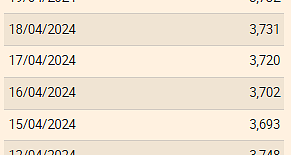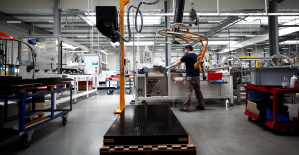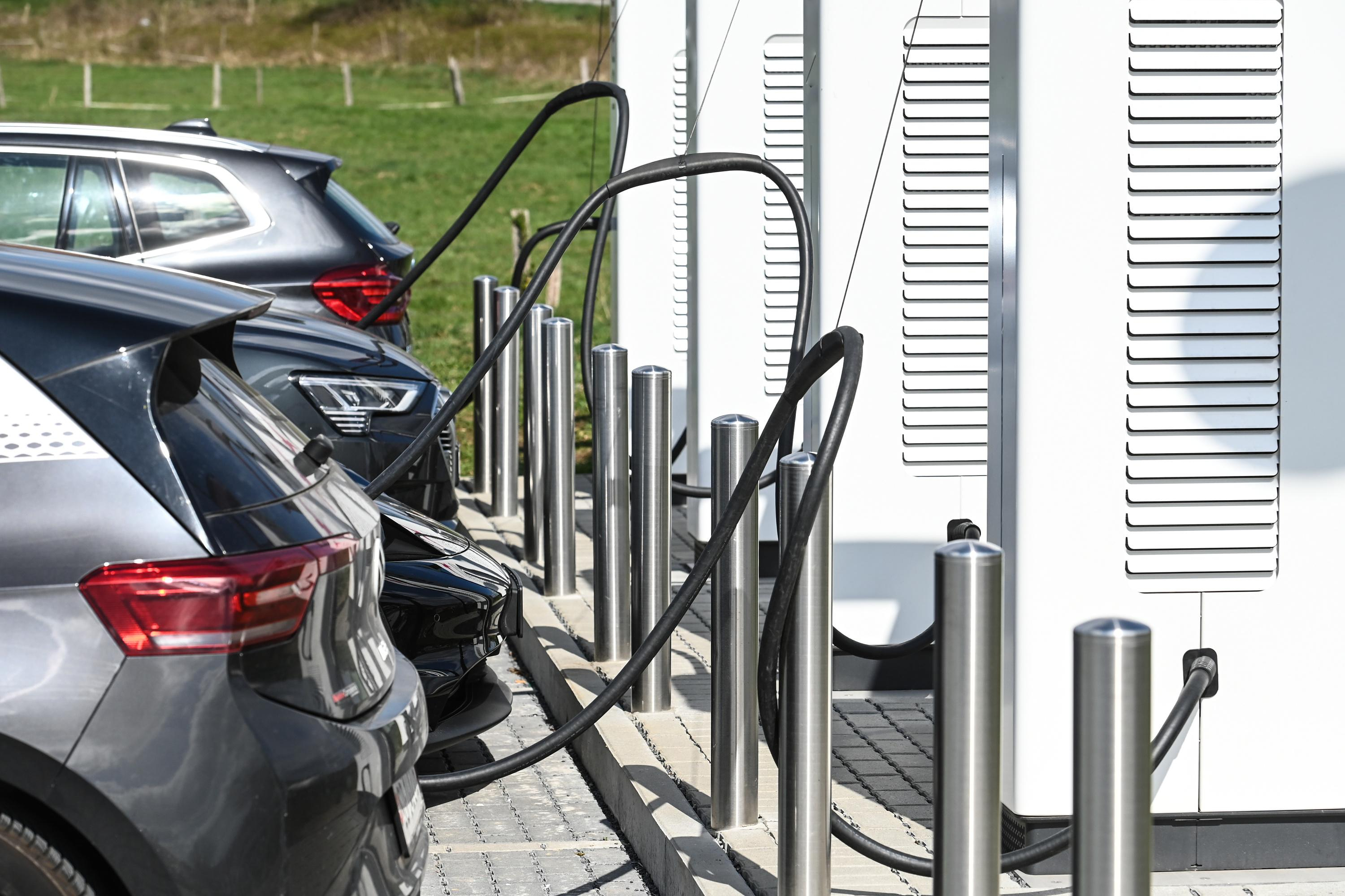Spårspring, lowered overhead, växelfel, signal failure. The Swedish train system is drawn with great problems with the timeliness. In 2017 were the trains delayed a total of 47 000 hours, which was more than in previous years. With the socio-economic valuation of delays on the trains the Swedish transport administration use, and an estimate of the average number of passengers per train of approximately 130, will be the cost of the hours that the trains were running late 2017, approximately 1.5 billion in förseningskostnad for persontågen. In addition, the cost of the freight.
When someone is staying close to the track – it can be a berry picker or anyone who walks their dog – so stopped all train traffic. Every day up to 80 delays of this reason.
at the same time as rail travel increases, and the capacity becomes strained, maintenance is greatly neglected. A few years ago spent big money catching up, but engineering works mean traffic disruptions and they will last a long time. It will take many years before there will be noticeable improvements for passengers. Of course, these are major maintenance tasks, urgent and necessary.
One driving force has been the fragmentation and opening up of the rail sector, which meant that the previous low in an organisation now lies with the several. Then, it has been necessary for clearer rules.
Some examples:
• According to the Swedish transport administration's rules be punctual trains take precedence over delayed. But often this means felprioriteringar. When a regional train or long-distance trains, with hundreds of travel will be nedprioriterat for a local train with far fewer travellers, this can mean that you wind up behind a train that stops at many more stations. Then increase the delay further, and the train comes ”out of phase” in relation to the other train. The delay can then spread. The routines for which the trains shall have precedence need to be reconsidered.
• Freight trains have a worse punctuality than passenger trains. It depends not only on delays but also on the freight trains often are away ahead of schedule. These trains can then end up in the path of the other train, which is thereby delayed. This required a tightening of the regulatory framework.
• A freight train would in the summer drive down to the port of Karlshamn. the Driver discovered too late a signal that switched on the red and slid in the low speed past the signal by a few meters. Nothing happened and no one was hurt. But according to the regulations, was the locomotive is not moved a millimeter, which meant the complete shutdown of all train traffic. The driver was taken out of service. Tågersättande buses were deployed. It took almost 5 hours before the train again was able to start running. A few days earlier there was a similar event in Gällivare with corresponding consequences. Simplification of the procedures for this type of events must be possible.
• When someone is staying close to the track – it can be a berry picker or anyone who walks their dog – so stopped all train traffic. Police are sent out to search for the person in question. This is not a high priority task for the police and can take a long time. The result is usually that no one could be found and only when the police are given the go-ahead can the train traffic be allowed back on.
Every day up to 80 delays for this reason, delays in the last year, the cost to society of sek 82 million, according to the Swedish transport administration. Compare with when the same transport authorities receive information that a person is living in the edge of the highway. Then to be warned the road users via local radio, but no one would come on the idea to close the entire highway. A more reasonable solution would be to allow the trains creep past the site. This will keep the risks at a low level, while the disruption will be much less.
• When a service disruption can a solution be to lead on the train the other way. But it is administratively burdensome at short notice to lead on the train, who will then have to get new tågnummer. This takes such a long time that the Swedish transport administration often instead choose to set up the trains and put in ersättningsbussar. In other countries there are procedures in place to be able to quickly omleda trains without compromising safety. Such rules should urgently be introduced here also.
• In our large maintenance work on the Southern main line to be implemented. , the Swedish transport administration's proposal was to turn off traffic in a weekend, which would be enough to catch and because fewer are traveling on the weekends, the number of disturbed is minimized. A persontågsföretag, as most run on weekends, protested. Then decided the Swedish transport administration to instead turn off the track during the weekdays in a week, which will mean much greater negative effects, for the transport of goods and arbetspendling. In this type of case, have the Swedish transport administration have the courage to stand against the individual carriers to ensure the best overall solution.
• Increased outsourcing of maintenance work has meant that many new companies without experience of working in järnvägsmiljö has been hired. After an accident in west yorkshire a few years ago, when a train ran on an excavator bucket, have procedures been tightened. Earlier it was often single track use and reduced speed past construction sites – in the day shut down all rail traffic. A better order would have been to raise the requirements on the companies that are going to work in the track and in the increased extent to which the reintroduction of single track use and low speeds, past the construction sites.
In all the cases we have reported changes of the administrative procedures and rules of the Swedish transport administration and the Swedish transport agency significantly reducing tågförseningarna while maintaining high security. This can be done in the short term and at very moderate costs.
In a world of increased tågresande, high capacity utilization and large delays are required, a different control of the traffic at the various forms of interference. It is, in some cases, if a greater degree of flexibility, while in other cases, a clearer governance towards greater punctuality, which optimizes the outcome against the reduction in the number of förseningstimmar for persons and goods.
the Consultancy firm the Boston Consulting Group conducts every two years a ranking of european countries ' rail services. According to the latest measurement is Switzerland clearly the highest with an index of 7.2, while Sweden ends up a piece down on the list with the index of 6.0. Sweden is lower ranked than Switzerland in respect of all the three measured parameters of service quality (including timeliness), capacity utilization and safety. It is clear, therefore, that the timeliness and many trains on the tracks need not be in conflict with high security.
Unless the delays are handled in a better way, there is a large risk that people stop to take the train, and instead choose plane or car. This will give significant negative impacts on many levels, and goes against the climate objectives that Sweden has.

 The Euribor today remains at 3.734%
The Euribor today remains at 3.734% Germany: the trial of an AfD leader, accused of chanting a Nazi slogan, resumes this Tuesday
Germany: the trial of an AfD leader, accused of chanting a Nazi slogan, resumes this Tuesday New York: at Columbia University, the anti-Semitic drift of pro-Palestinian demonstrations
New York: at Columbia University, the anti-Semitic drift of pro-Palestinian demonstrations What is Akila, the mission in which the Charles de Gaulle is participating under NATO command?
What is Akila, the mission in which the Charles de Gaulle is participating under NATO command? What High Blood Pressure Does to Your Body (And Why It Should Be Treated)
What High Blood Pressure Does to Your Body (And Why It Should Be Treated) Vaccination in France has progressed in 2023, rejoices Public Health France
Vaccination in France has progressed in 2023, rejoices Public Health France Food additives suspected of promoting cardiovascular diseases
Food additives suspected of promoting cardiovascular diseases “Even morphine doesn’t work”: Léane, 17, victim of the adverse effects of an antibiotic
“Even morphine doesn’t work”: Léane, 17, victim of the adverse effects of an antibiotic Orthodox bishop stabbed in Sydney: Elon Musk opposes Australian injunction to remove videos on X
Orthodox bishop stabbed in Sydney: Elon Musk opposes Australian injunction to remove videos on X One in three facial sunscreens does not protect enough, warns L'Ufc-Que Choisir
One in three facial sunscreens does not protect enough, warns L'Ufc-Que Choisir What will become of the 81 employees of Systovi, a French manufacturer of solar panels victim of “Chinese dumping”?
What will become of the 81 employees of Systovi, a French manufacturer of solar panels victim of “Chinese dumping”? “I could lose up to 5,000 euros per month”: influencers are alarmed by a possible ban on TikTok in the United States
“I could lose up to 5,000 euros per month”: influencers are alarmed by a possible ban on TikTok in the United States Dance, Audrey Hepburn’s secret dream
Dance, Audrey Hepburn’s secret dream The series adaptation of One Hundred Years of Solitude promises to be faithful to the novel by Gabriel Garcia Marquez
The series adaptation of One Hundred Years of Solitude promises to be faithful to the novel by Gabriel Garcia Marquez Racism in France: comedian Ahmed Sylla apologizes for “having minimized this problem”
Racism in France: comedian Ahmed Sylla apologizes for “having minimized this problem” Mohammad Rasoulof and Michel Hazanavicius in competition at the Cannes Film Festival
Mohammad Rasoulof and Michel Hazanavicius in competition at the Cannes Film Festival Skoda Kodiaq 2024: a 'beast' plug-in hybrid SUV
Skoda Kodiaq 2024: a 'beast' plug-in hybrid SUV Tesla launches a new Model Y with 600 km of autonomy at a "more accessible price"
Tesla launches a new Model Y with 600 km of autonomy at a "more accessible price" The 10 best-selling cars in March 2024 in Spain: sales fall due to Easter
The 10 best-selling cars in March 2024 in Spain: sales fall due to Easter A private jet company buys more than 100 flying cars
A private jet company buys more than 100 flying cars This is how housing prices have changed in Spain in the last decade
This is how housing prices have changed in Spain in the last decade The home mortgage firm drops 10% in January and interest soars to 3.46%
The home mortgage firm drops 10% in January and interest soars to 3.46% The jewel of the Rocío de Nagüeles urbanization: a dream villa in Marbella
The jewel of the Rocío de Nagüeles urbanization: a dream villa in Marbella Rental prices grow by 7.3% in February: where does it go up and where does it go down?
Rental prices grow by 7.3% in February: where does it go up and where does it go down? Europeans: “All those who claim that we don’t need Europe are liars”, criticizes Bayrou
Europeans: “All those who claim that we don’t need Europe are liars”, criticizes Bayrou With the promise of a “real burst of authority”, Gabriel Attal provokes the ire of the opposition
With the promise of a “real burst of authority”, Gabriel Attal provokes the ire of the opposition Europeans: the schedule of debates to follow between now and June 9
Europeans: the schedule of debates to follow between now and June 9 Europeans: “In France, there is a left and there is a right,” assures Bellamy
Europeans: “In France, there is a left and there is a right,” assures Bellamy These French cities that will boycott the World Cup in Qatar
These French cities that will boycott the World Cup in Qatar Serie A: Bologna surprises AS Rome in the race for the C1
Serie A: Bologna surprises AS Rome in the race for the C1 Serie A: Marcus Thuram king of Italy, end of the debate for the position of number 9 with the Blues?
Serie A: Marcus Thuram king of Italy, end of the debate for the position of number 9 with the Blues? Milan AC-Inter Milan: Thuram and Pavard impeccable, Hernandez helpless… The tops and flops of the derby
Milan AC-Inter Milan: Thuram and Pavard impeccable, Hernandez helpless… The tops and flops of the derby Ligue 2: Auxerre leader, Bordeaux in crisis, play-offs... 5 questions about an exciting end of the season
Ligue 2: Auxerre leader, Bordeaux in crisis, play-offs... 5 questions about an exciting end of the season


















